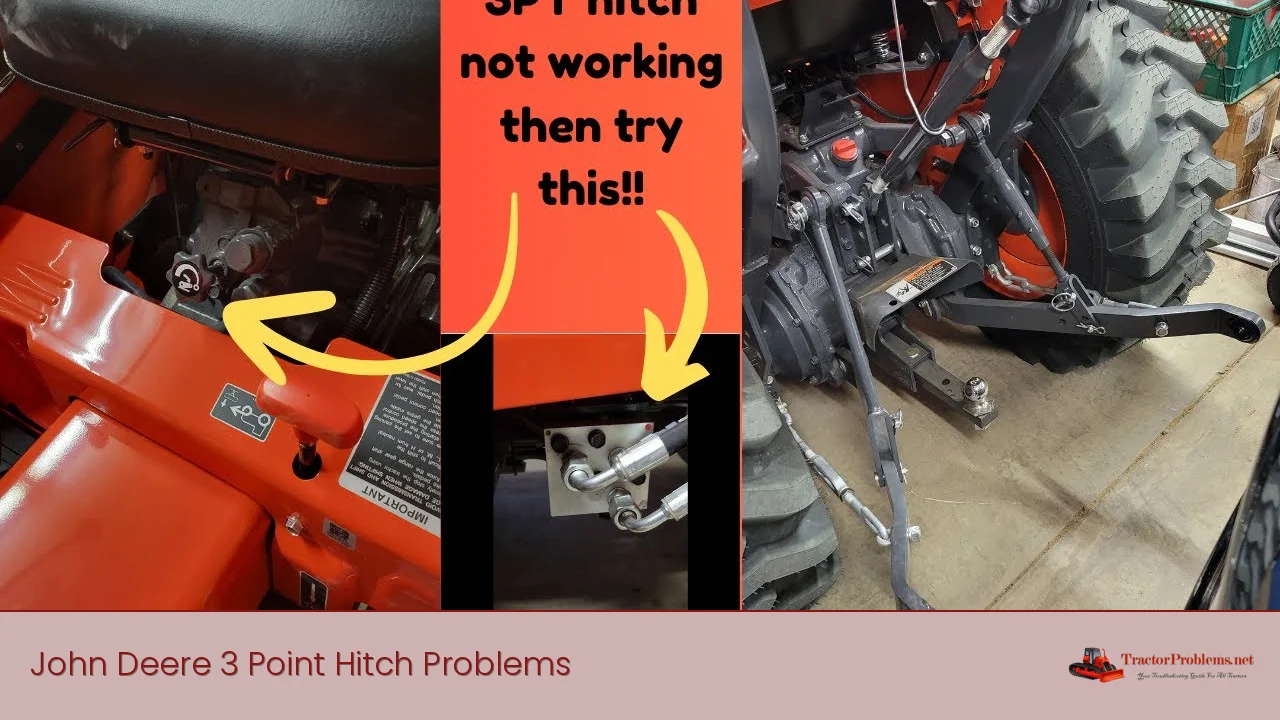Identifying and Resolving John Deere 3 Point Hitch Problems Quickly and Easily
With a John Deere 3 Point Hitch, you can get the job done efficiently and effectively. But when problems arise, it can be difficult to identify and resolve them quickly and easily. Our comprehensive guide provides detailed tips and advice to help you troubleshoot and fix any John Deere 3 Point Hitch issues, saving you time and money. Learn how to quickly identify common issues and find solutions to keep your equipment running smoothly.
| Issue | Possible Causes | Resolution |
|---|---|---|
| Tractor not engaging | Misaligned linkage, damaged parts, faulty wiring | Check linkage, inspect wiring and parts, repair or replace damaged parts |
| Excess vibration | Loose linkage, worn or broken parts | Tighten linkage, inspect parts for wear and damage, repair or replace worn or broken parts |
| Fluid leaks | Damaged seals, loose fittings | Inspect seals and fittings, replace damaged or worn seals, tighten loose fittings |
| Unusual noises | Faulty wiring, worn or broken parts | Inspect wiring, inspect parts for wear and damage, replace worn or broken parts |
Excessive Wear
Excessive wear on the John Deere 3 Point Hitch can be an indication of a problem that needs attention. Wear causes the hitch to become loose, resulting in poor performance and potentially dangerous situations. To check for excessive wear, inspect the hitch for any signs of wear such as a gap between the drawbar and the lift arms. If a gap is present, it is likely that the hitch needs to be serviced or replaced. John Deere 3 Point Hitch Problems can be quickly identified and resolved with the help of experienced mechanics and the right tools.Pins and Bushings
The pins and bushings on the John Deere 3 Point Hitch are the most common sources of problems. When the pins and bushings become worn, they can cause the hitch to become loose and unreliable. To check for wear, inspect the pins and bushings for any signs of damage or corrosion. If the pins and bushings are damaged, they should be replaced to ensure proper performance and safety. Regular inspection and maintenance of the John Deere 3 Point Hitch will help prevent potential problems from occurring.Rusting
Rusting of the John Deere 3 Point Hitch is a common problem that can lead to poor performance and safety issues. Rust can cause the hitch to become loose, resulting in poor performance and the risk of accidents or injury. To prevent rusting, use a rust-inhibiting lubricant on all parts of the hitch and inspect it regularly for any signs of rust or corrosion. With the right preventative measures, rusting of the John Deere 3 Point Hitch can be easily identified and prevented.Key Takeaways for Identifying and Resolving John Deere 3 Point Hitch Problems
- Misaligned linkage, damaged parts, and faulty wiring can lead to tractor not engaging
- Loose linkage, worn or broken parts, and damaged seals and fittings can cause excess vibration and fluid leaks
- Faulty wiring, worn or broken parts, and loose fittings can result in unusual noises
- Excessive wear on the John Deere 3 Point Hitch can cause poor performance and safety issues
- Inspect the pins and bushings for any signs of damage or corrosion to prevent poor performance and safety issues
- Use a rust-inhibiting lubricant to prevent rusting and inspect regularly for any signs of rust or corrosion
